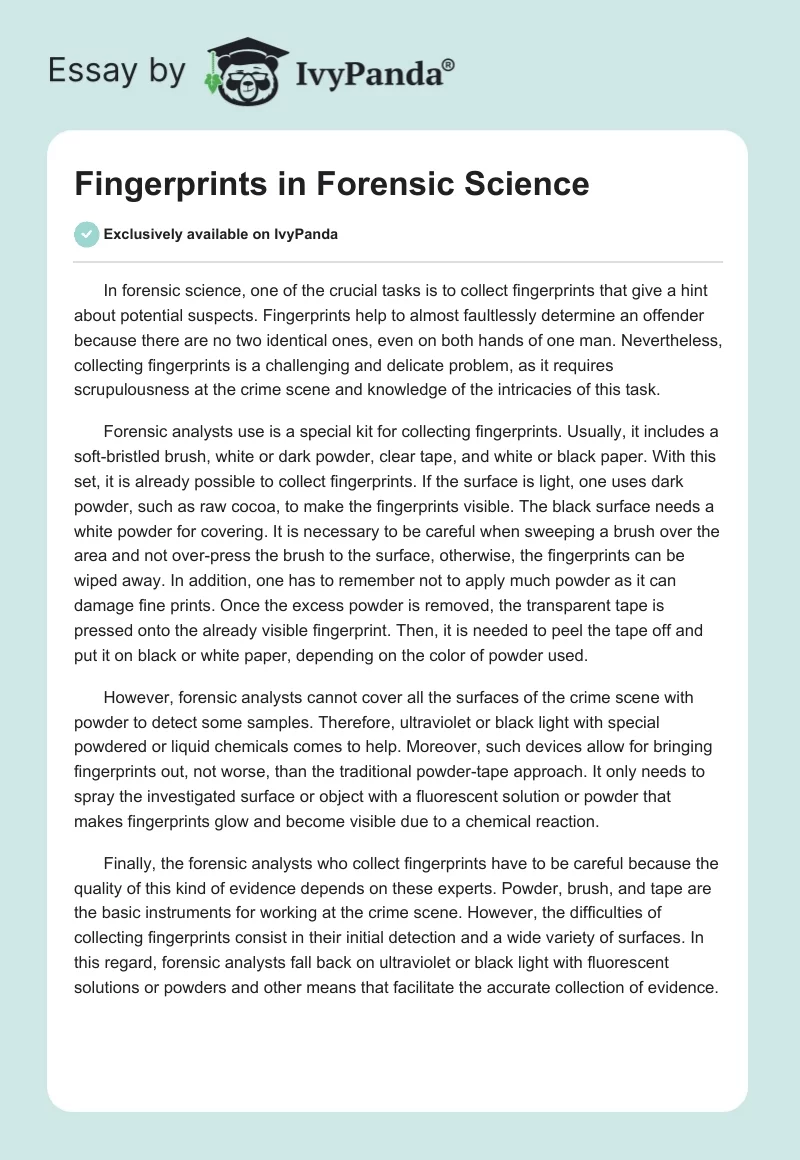In forensic science, one of the crucial tasks is to collect fingerprints that give a hint about potential suspects. Fingerprints help to almost faultlessly determine an offender because there are no two identical ones, even on both hands of one man. Nevertheless, collecting fingerprints is a challenging and delicate problem, as it requires scrupulousness at the crime scene and knowledge of the intricacies of this task.
Forensic analysts use is a special kit for collecting fingerprints. Usually, it includes a soft-bristled brush, white or dark powder, clear tape, and white or black paper. With this set, it is already possible to collect fingerprints. If the surface is light, one uses dark powder, such as raw cocoa, to make the fingerprints visible. The black surface needs a white powder for covering. It is necessary to be careful when sweeping a brush over the area and not over-press the brush to the surface, otherwise, the fingerprints can be wiped away. In addition, one has to remember not to apply much powder as it can damage fine prints. Once the excess powder is removed, the transparent tape is pressed onto the already visible fingerprint. Then, it is needed to peel the tape off and put it on black or white paper, depending on the color of powder used.
However, forensic analysts cannot cover all the surfaces of the crime scene with powder to detect some samples. Therefore, ultraviolet or black light with special powdered or liquid chemicals comes to help. Moreover, such devices allow for bringing fingerprints out, not worse, than the traditional powder-tape approach. It only needs to spray the investigated surface or object with a fluorescent solution or powder that makes fingerprints glow and become visible due to a chemical reaction.
Finally, the forensic analysts who collect fingerprints have to be careful because the quality of this kind of evidence depends on these experts. Powder, brush, and tape are the basic instruments for working at the crime scene. However, the difficulties of collecting fingerprints consist in their initial detection and a wide variety of surfaces. In this regard, forensic analysts fall back on ultraviolet or black light with fluorescent solutions or powders and other means that facilitate the accurate collection of evidence.

